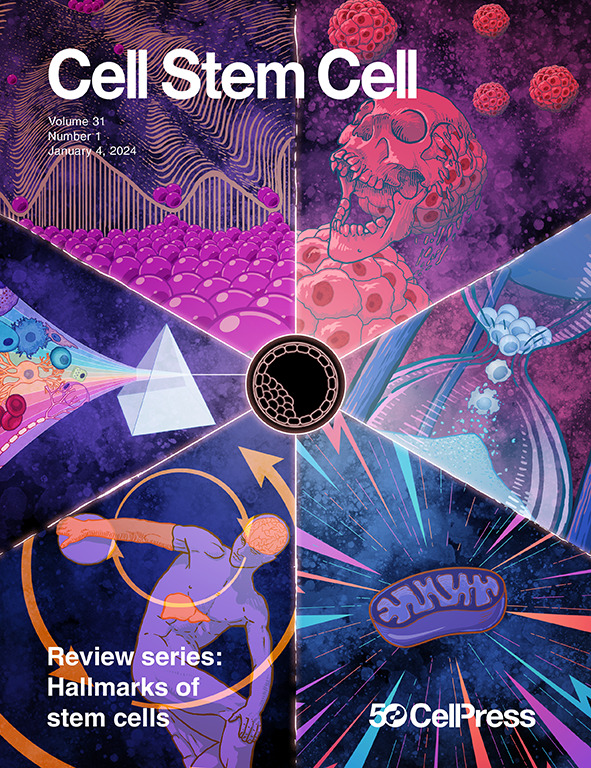ChemPerturb-seq筛选确定了一种小分子鸡尾酒,可提高人皮下移植后β细胞的存活率
IF 20.4
1区 医学
Q1 CELL & TISSUE ENGINEERING
引用次数: 0
摘要
传统的化学筛检只专注于每次筛检的单一检测,这使得它们的劳动强度和成本都很高。在这里,我们将化学筛选与单细胞RNA测序(scRNA-seq)相结合,进行化学扰动-seq (ChemPerturb-seq),能够系统地分析单个小分子处理后人类β细胞的分子变化。利用这个平台,我们进行了体内条形码筛选,发现了一种小分子鸡尾酒,包括β -脂蛋白61-91、胰岛素生长因子-1和前列腺素E2,在雌性小鼠皮下移植时,预处理人类β细胞和原代胰岛显著提高了功能和存活率,而雄性小鼠则没有。我们使用ChemPerturb-seq技术将血清素和组胺两种额外的分子移植到雄性小鼠皮下后,发现它们能促进胰岛功能。这种小分子鸡尾酒可以用于改进目前fda批准的胰岛移植程序。最后,我们开发了一个人工智能(AI)驱动的网站chem摄动db,它提供了广泛的chem摄动-序列数据集的用户友好的开放访问分析。本文章由计算机程序翻译,如有差异,请以英文原文为准。

ChemPerturb-seq screen identifies a small molecule cocktail enhancing human beta cell survival after subcutaneous transplantation
Traditional chemical screens have focused on a single assay per screen, making them labor intensive and costly. Here, we combined a chemical screen with single-cell RNA sequencing (scRNA-seq) to perform Chemical Perturb-seq (ChemPerturb-seq), enabling a systematic analysis of the molecular changes of human beta cells upon individual small molecule treatments. Using this platform, we performed an in vivo barcoded screen and discovered a small molecule cocktail, including beta-lipotropin 61-91, insulin growth factor-1, and prostaglandin E2, with which preconditioning human beta cells and primary islets significantly enhanced function and survival when transplanted subcutaneously to female, but not to male, mice. We identified two additional molecules, serotonin and histamine, that promote islet function when transplanted subcutaneously to male mice using ChemPerturb-seq. Such small molecule cocktails could be applied to improve the current FDA-approved islet transplantation procedure. Finally, we developed an artificial intelligence (AI)-powered website, ChemPerturbDB, which provides user-friendly open access analysis of the extensive ChemPerturb-seq dataset.
求助全文
通过发布文献求助,成功后即可免费获取论文全文。
去求助
来源期刊

Cell stem cell
生物-细胞生物学
CiteScore
37.10
自引率
2.50%
发文量
151
审稿时长
42 days
期刊介绍:
Cell Stem Cell is a comprehensive journal covering the entire spectrum of stem cell biology. It encompasses various topics, including embryonic stem cells, pluripotency, germline stem cells, tissue-specific stem cells, differentiation, epigenetics, genomics, cancer stem cells, stem cell niches, disease models, nuclear transfer technology, bioengineering, drug discovery, in vivo imaging, therapeutic applications, regenerative medicine, clinical insights, research policies, ethical considerations, and technical innovations. The journal welcomes studies from any model system providing insights into stem cell biology, with a focus on human stem cells. It publishes research reports of significant importance, along with review and analysis articles covering diverse aspects of stem cell research.
 求助内容:
求助内容: 应助结果提醒方式:
应助结果提醒方式:


